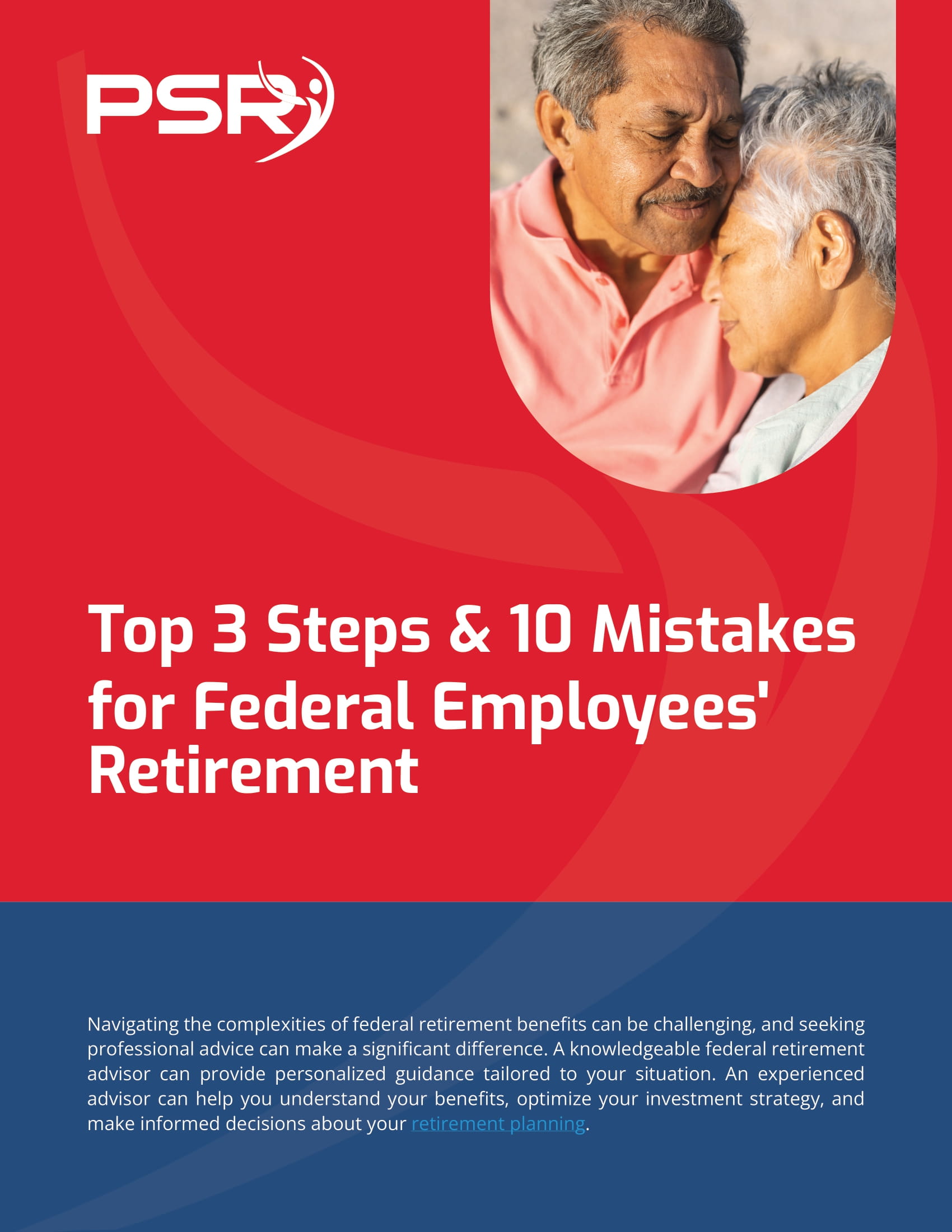Key Takeaways
-
Electing survivor benefits under your federal retirement plan impacts your spouse’s long-term financial security and your own monthly annuity—make informed choices.
-
Reviewing your survivor benefit election, life insurance, and health coverage before retirement or major life events helps prevent unintended consequences.
Survivor Benefits Aren’t Automatic—And They’re Not Always Straightforward
If you’re a government employee preparing for retirement
- Also Read: The FEHB and Medicare Combo That Saves Money (But Only If You Know the Rules)
- Also Read: Here’s What Every CSRS Retiree Needs to Recheck Now That WEP Has Finally Been Repealed
- Also Read: Federal Employees Are Facing New Retirement Pressure—Are You Planning for What’s Next?
Survivor benefits under the Civil Service Retirement System (CSRS) or the Federal Employees Retirement System (FERS) can provide ongoing financial support for a surviving spouse, but your election choice affects your annuity amount, insurance options, and even access to continued health coverage. This means you need to revisit these decisions periodically—especially before retirement or during key life changes.
Understanding How Survivor Annuities Work
Survivor annuities are designed to provide a portion of your retirement income to a surviving spouse or, in some cases, another designated beneficiary. When you elect a survivor annuity:
-
You agree to a reduced monthly retirement annuity.
-
Your designated survivor receives a recurring benefit after your death.
-
The benefit continues as long as eligibility rules are met.
For FERS, the standard survivor annuity provides your spouse with 50% of your unreduced annuity. Under CSRS, it’s typically 55%. However, partial annuities or opting out entirely are also options—with serious consequences.
What Happens If You Choose No Survivor Annuity
If you elect no survivor benefit:
-
Your annuity is higher during your lifetime.
-
Your spouse or dependent receives no recurring income after your death.
-
Your spouse may lose eligibility to continue FEHB health coverage unless they have another qualifying enrollment.
That last point is critical. If you’re under FEHB and want your spouse to keep that coverage after your death, you must elect at least a partial survivor annuity. This holds true even if they don’t need the income.
Review the Cost Before Making a Decision
Choosing a survivor benefit affects your monthly annuity. For 2025:
-
The cost of a full FERS survivor benefit is typically about 10% of your gross annuity.
-
A partial survivor benefit (25% of your annuity to your spouse) costs about 5%.
-
Electing no survivor benefit means no reduction in your monthly annuity, but again—your spouse may lose access to FEHB.
These reductions apply for life, so you need to weigh the long-term impact. Is your spouse financially independent? Will life insurance fill the gap? Are there any other income sources?
Marriage, Divorce, and Remarriage: How It Affects Elections
Your marital status plays a key role in how survivor benefits are administered. Here’s what you need to know:
1. If You’re Married When You Retire
-
The law requires that your spouse consent in writing if you choose anything less than the maximum survivor benefit.
-
Failure to obtain consent will automatically result in the default full benefit election.
2. If You Divorce After Retirement
-
Court orders may entitle your former spouse to a survivor annuity.
-
Your election during retirement may need to be changed by court order.
-
Failure to comply can result in garnished benefits or denied applications later.
3. If You Remarry
-
You can elect a new survivor annuity for your new spouse within two years of marriage.
-
This may result in a permanent reduction in your current annuity.
-
Additional deposits to the retirement system may be required to fund the added benefit.
Don’t assume previous elections carry forward after major life events. You’ll need to file specific forms and sometimes pay additional costs to modify elections.
Your FEHB Coverage Is Also on the Line
One of the most overlooked aspects of survivor benefit planning is health coverage under the Federal Employees Health Benefits (FEHB) Program. In 2025, the rules still require that your surviving spouse be entitled to a survivor annuity to keep FEHB coverage.
So even if your spouse doesn’t need income support, skipping a survivor annuity could cause them to lose access to federal health insurance. That could mean thousands of dollars per year in additional healthcare costs—especially if your spouse is not yet eligible for medicare or has chronic conditions.
To ensure your spouse stays covered:
-
You must be enrolled in FEHB on a Self Plus One or Self and Family plan when you die.
-
You must elect at least a partial survivor annuity.
-
Your spouse must be eligible to receive it upon your death.
Consider Life Insurance As a Supplemental Option
Survivor benefits aren’t the only way to protect your spouse or dependents. Life insurance through the Federal Employees’ Group Life Insurance (FEGLI) program or private sources can also provide a lump sum after your death.
That said, life insurance isn’t a replacement for survivor annuities—especially when it comes to qualifying for FEHB continuation. But it may offer:
-
Additional financial support for mortgage, debt, or long-term care needs
-
A cushion during the initial months before survivor annuity payments begin
-
Greater flexibility in planning
If you’re using life insurance as a backstop, make sure it remains active into retirement. Many retirees reduce or drop coverage due to rising premiums, which can leave a gap later on.
You May Be Able to Change Your Election Later—But There Are Limits
Once you elect a survivor benefit at retirement, it becomes difficult—but not impossible—to change. The rules are different depending on your retirement system and circumstances.
Here are some of the options:
-
Within 18 months of retirement, you can cancel or reduce the survivor benefit with your spouse’s signed consent.
-
If your spouse dies, your annuity reduction may be adjusted, but you must report the death and request the change.
-
If you remarry, you have two years to elect a new survivor benefit. This typically requires a deposit to cover the additional cost.
However, once your annuity starts, you can’t simply switch from full to partial or vice versa. These decisions are largely locked in, so reviewing them before your retirement date is key.
Don’t Forget About Children and Insurable Interest Benefits
While most focus is placed on spousal survivor benefits, children and other dependents may also qualify in certain cases:
-
Minor children or those under 22 and in full-time education may receive a benefit.
-
Children who are disabled before age 18 may qualify for benefits beyond age 22.
-
If you elect a survivor benefit for someone with an insurable interest (such as a sibling or domestic partner), your annuity reduction will be larger—typically 10% to 40%.
These elections require medical documentation and proof of dependency, so they are less common. But for some, they’re a vital part of end-of-life planning.
Timing Is Everything: When to Review and Reassess
Even if you made a survivor benefit election years ago, it’s smart to review your choices regularly. Here are the moments when you should reassess:
-
One year before retirement – Plan survivor benefits alongside annuity estimates, insurance needs, and tax implications.
-
During Open Season – Review your FEHB enrollment to ensure your survivor is included on your plan.
-
After major life events – Marriage, divorce, birth, or death in the family may require a new election or legal documentation.
-
Every 5 years in retirement – Conduct a retirement benefits audit to catch any needed updates.
These reviews ensure your family doesn’t face avoidable disruptions later.
Your Retirement Agency Can Help—But Professional Advice Is Better
Your agency’s human resources office or retirement counselor can explain the basic rules, deadlines, and procedures. But remember: they can’t offer personal financial advice.
If you’re unsure how much coverage your spouse really needs—or how to balance survivor benefits with life insurance and tsp accounts—it’s worth speaking to a licensed agent or retirement planner. These professionals can help you:
-
Compare costs and benefits in real numbers
-
Structure retirement income for both spouses
-
Avoid costly mistakes or disqualifications
Make Informed Survivor Benefit Choices Today for a More Secure Tomorrow
The survivor benefit you choose today will affect your spouse’s future—and possibly your own peace of mind. It’s not just a retirement formality. It’s a financial protection strategy that works best when reviewed carefully and timed appropriately.
Talk to a licensed agent listed on this website for guidance tailored to your situation. The earlier you plan, the more flexibility you’ll have.








